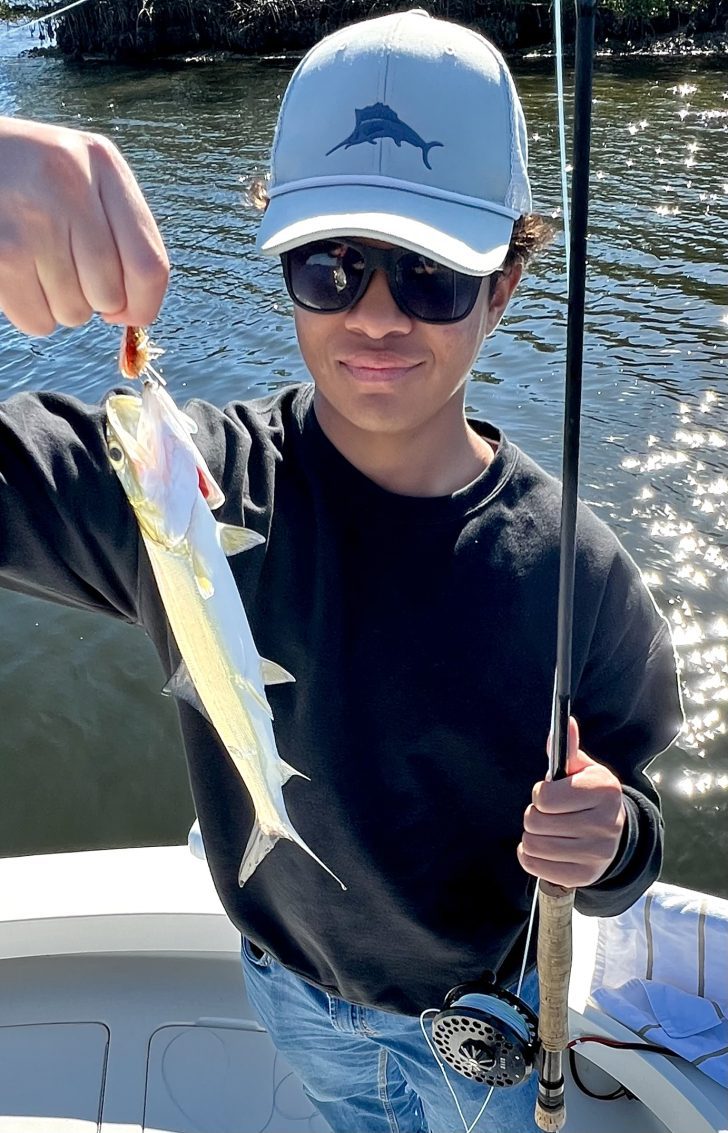Sheepshead are on the Menu!
The sheepshead are schooling during their traditional spawning season of February, March and April, so now is the time to take some home for dinner. Some say the sheepshead taste similar to lobster so if you like lobster, sheepshead is a cheaper alternative. The challenge is catching enough before melting the butter. That takes a bit of work and a little skill.
Sheepshead are always hanging around seawalls, bridges and residential dock pilings, but during the spawn they school up heavily and become extremely aggressive. They like to feed on small crabs, shrimp, barnacles and other small crustaceans.
Some people keep a long-handled scraper on their boat and scrape barnacles off the bridge pilings where they’re fishing to chum up sheepshead. You can even put a piece of barnacle on your hook as bait to catch them. This works very well actually, but don’t try the scraping barnacle technique on a residential homeowner’s private dock pilings, it’s illegal.
Fiddler crabs are another very productive bait for sheepshead but, unless you’re willing go digging around in the sand for them along mangrove shorelines, fuhgeddaboudit! Sometimes bait shops have fiddler crabs on a day-to-day basis; when that’s the case, it’s a win win.
I, on the over hand, chum up sheepshead with pieces of shrimp. Whatever shrimp I have left over from a day of fishing, I freeze. On my next charter, I take the frozen shrimp along for chum. It can also be used for bait, once thawed. In addition to having frozen shrimp onboard, I always stop at the local bait and tackle shop to buy live shrimp. When buying live shrimp, I always go for the medium-sized. As you fish, if you miss a strike and reel back in half a shrimp, toss it back out there. Shrimp halves work very well!
Sheepshead are known as “Bait Stealers.” It’s often said, to catch sheepshead, you need to set the hook before you feel the bite. That’s easier said than done. It helps, if you’re using braided fishing line but, when using mono, it’s important to keep as much slack out of your line as possible. Then once you feel even the slightest of bites, immediately reel until your line is tight and lift the rod for a solid hook set.
In most of the areas that you’ll be fishing for sheepshead, the water will be super clear, so down-size your terminal tackle. Start off with a 20-pound fluorocarbon leader and use a size #1 or 1/0 hook. If necessary, drop down to a 15-pound fluorocarbon leader and use strictly size #1 hooks.
Once you’re back at the cleaning table, filleting sheepshead takes some practice to avoid waste. Begin by running the fillet knife down along the top of its back starting at the head area, and as you work the flesh off around the rib cage continue filleting along the backbone down towards the tip of its tail. Then flip the fillet over and run the knife between the skin and the flesh. I’m sure there’s got to be videos of filleting sheepshead on YouTube.
The minimum size for sheepshead is 12 inches with an eight fish bag limit per person.
The spotted seatrout action remains strong, and they’re easy to find. It’s no secret that, with the extremely low tides we’ve been having lately, the fish are in deeper water. Large concentrations can be found in all the tributaries leading into Tampa Bay. Some days though, getting a bait to the seatrout can be a problem, due to the number of ladyfish feeding in the same area. Schooling ladyfish are like a pack of wolves, they will chase bait down in groups of threes and fours until it’s devoured.
When ladyfish are this abundant, it’s a perfect time to have some fun, while using a fly rod. Jack found this out firsthand during his first saltwater experience with a fly during a recent trip, while down from Virgina. Jack caught numerous ladyfish, aka, “Poor Man’s Tarpon,” and some feisty seatrout. With a little coaching while using a 9wt and a pinkish brown imitation shrimp fly pattern, he started landing fish in no time at all.
Afishionado, “Adventures in Fishing.”

